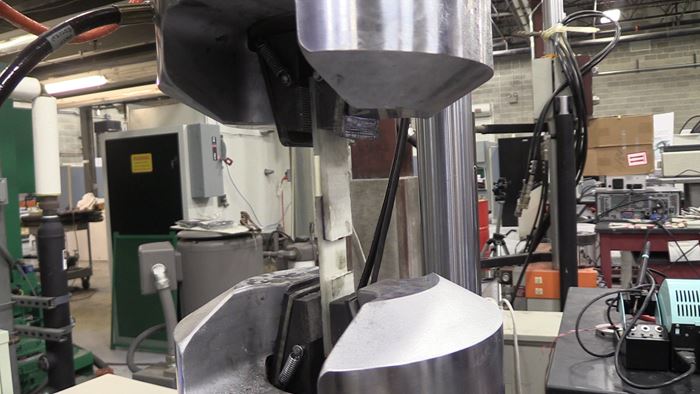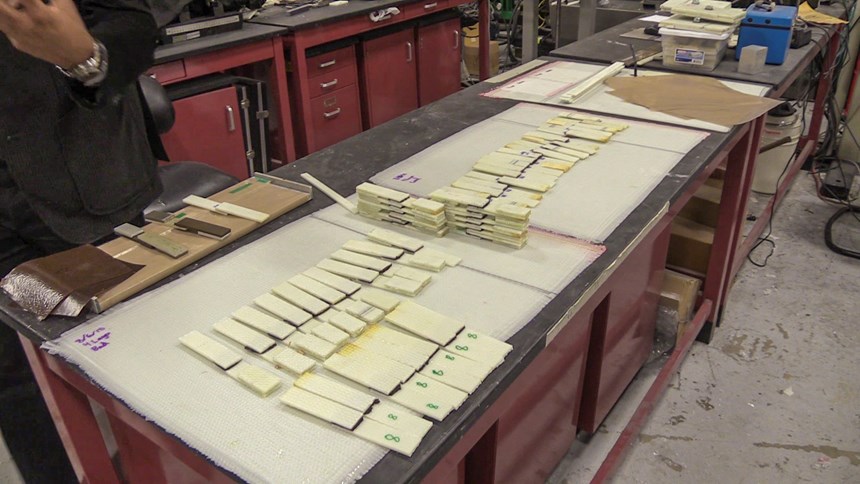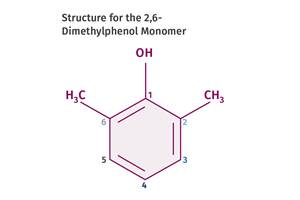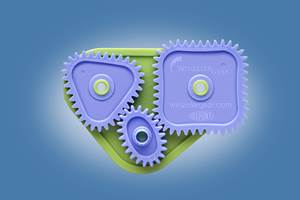Ferromagnetic Nanoparticles Lead Quest for Reversible Adhesives
Promising research on reversible multi-material adhesive bonds could prove game changing in auto industry.
A key trend in automotive is the use of multi-material structures and, in turn, the ability to structurally join dissimilar materials and keep them together during the vehicle’s useful life, yet the need to separate them for repair, rejoin them and then separate them again at end-of-life for recycling has become increasingly important. This is particularly key for primary vehicle structures, which are far more safety critical than interior or exterior panels and, as such, vital to prevent unwanted separation during vehicle operation. They are also costlier to replace, which makes them highly desirable targets for repair rather than the junkyard if damaged.
Each of the conventional structural joining technologies—welding, mechanical fastening and adhesive bonding—fall short of ideal in this new multi-material reality, according to Peggy Malnati in a contributed article to the January 2018 issue of our sister publication Composites World.
Malnati reports on a multi-year research program involving the American Chemistry Council’s Plastics Division (ACC-PD) and Michigan State University (MSU) through its Composite Vehicle Research Center (CVRC; East Lansing, Mich.), headed by Lawrence Drzal, university distinguished professor and a renowned expert on composites, nanocomposites, and surface chemistry. This continuing effort has yielded surprisingly effective results in its quest to develop reversible adhesive joints that can be debonded and rebonded multiple times. Center stage in making this possible are ferromagnetic nanoparticles in thermoplastic adhesives, using electromagnetic energy,
According to the researchers, this capability could facilitate composites use in mixed-material vehicle structures because it gives adhesively bonded joints the durability and the reversibility of mechanically fastened joints, with reduced weight. Here’s s quick summary of how things have shaped up to date:
The team has used iron oxide nanoparticles at loading of 4-20% in a variety of thermoplastic adhesives. “We characterized the particles in and out of the adhesive, so we could understand their synergy and be able to predict when impact and strength would drop and what concentration was best so mechanicals stayed good but the bond was quickly reversible,” explained Mahmood Haq, assistant professor at MSU’s Department of Civil & Environmental Engineering. “For example, at 4% loading, the joint has good impact and strength, but takes 10 minutes to heat. However, at 12-16% loadings, we have a small drop in mechanicals but we can heat the joint in less than 20 seconds. Those bonds still carry loads, prevent fractures, resist fatigue and eliminate corrosion.”
The team started with nylons 6 and 66 followed by ABS, PC, HIPS and several olefin-based hot-melt adhesives. Thanks to professor Drzal’s surface-chemistry expertise and the team’s hard work, they now know how to adjust the surface chemistry of not only the polymers but also the nanoparticles and, as such, can make the technology work in just about any thermoplastic adhesive system. The technology is said to be fairly tailorable—amorphous, crystalline, polar or non-polar resins are usable—all being a matter of identifying application requirements, followed by adjusting the chemistry so functional groups on particles match up with those on the polymer, according to Haq.
Mike Day, ACC-PD technical consultant and career retiree from DuPont, noted that the team’s approach has been this that this is an ‘enabling” technology’. “We took a fairly broad view of thermoplastics as an adhesive element and tried lots of resins so we weren’t limited to one polymer family. This is pre-competitive work, so we knew we couldn’t figure everything out, but had to focus on proving the concept.”
When resin/particle surface compatibility and substrate surface prep are correctly done, the team has achieved joint shear strengths in the range of 12-13 MPa (1741-1886 psi), which is said to be better than epoxy structural adhesives.
Interestingly, bond strength reportedly increases after several cycles of bonding/debonding vs. that achieved via convection heating alone. While the initial target was to create a reversible joint that could survive six cycles of bonding/debonding—a goal thought by the team as a reasonable lifetime expectation—they were pleasantly surprised to find joints surviving 20 and even 100 cycles. Also, electromagnetic bonding is faster than with convection ovens; it does not heat surrounding substrates and is amenable to automation.
Related Content
Tracing the History of Polymeric Materials: Polyphenylene Oxide
Behind the scenes of the discovery of PPO.
Read MoreMelt Flow Rate Testing–Part 1
Though often criticized, MFR is a very good gauge of the relative average molecular weight of the polymer. Since molecular weight (MW) is the driving force behind performance in polymers, it turns out to be a very useful number.
Read MoreTracing the History of Polymeric Materials: Acetal
The road from discovery in the lab to commercial viability can be long, and this was certainly the case for acetal polymers.
Read MorePrices for All Volume Resins Head Down at End of 2023
Flat-to-downward trajectory for at least this month.
Read MoreRead Next
How Polymer Melts in Single-Screw Extruders
Understanding how polymer melts in a single-screw extruder could help you optimize your screw design to eliminate defect-causing solid polymer fragments.
Read MoreTroubleshooting Screw and Barrel Wear in Extrusion
Extruder screws and barrels will wear over time. If you are seeing a reduction in specific rate and higher discharge temperatures, wear is the likely culprit.
Read More


















.png;maxWidth=300;quality=90)







